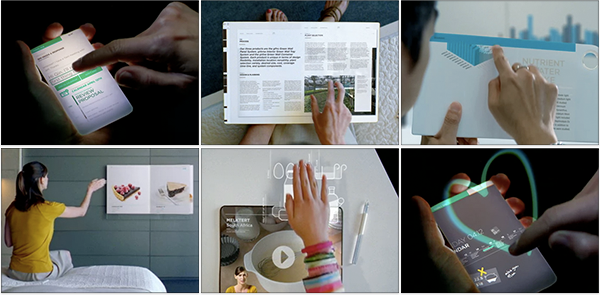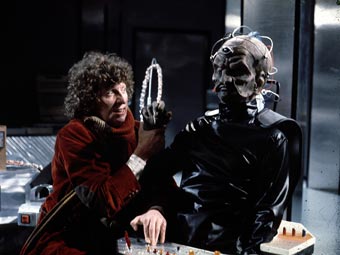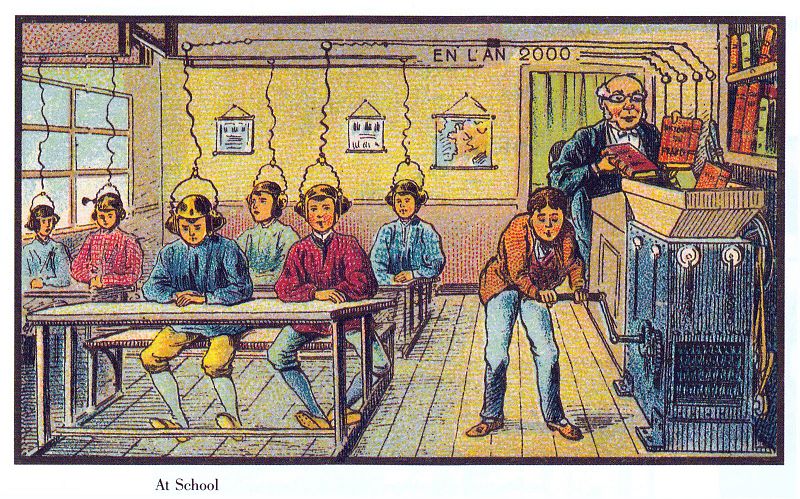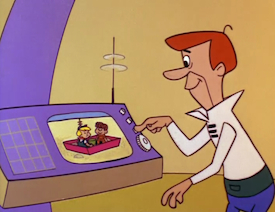The Moonspeaker:
Where Some Ideas Are Stranger Than Others...
TOUCH ME NOT
Recently I have been engaged in an Edward Tufte read-a-thon, primarily in hard copy since his four excellent books on the visual representation of data are well worth it. In perusing his website, I stumbled over his post, Touchscreens Have No Hand. The comments on the post were in several cases puzzling, but indicative of different preferred learning modes between the commenters and Tufte himself. Currently mainstream north american culture is hostile to touching and movement, and this was reflected in the nature of several of the comments. Tufte's article includes among its own links a reference to A Brief Rant on the Future of Interaction Design by Bret Victor. Together, Tufte and Victor's arguments directly inspired this essay – or rather, sketch of an essay. My purpose is not to rant about interaction design (though I enjoy ranting as much as the next person, see the Thoughtpieces on what's wrong and what's right about the web), but to try ferreting out the model of body and mind the mainstream ideas about interaction design are based on.


Still From microsoft's "Future Vision" Video, quoted from Bret Victor's Essay, Circa 2011
In trying to understand who most interaction designers are designing for these days, many of us have seen mock ups and simulations of what "the future of technology" is supposed to be like. These are very risky things to make, as Isaac Asimov's collection of French postcards imagining En L'An 2000 make clear in a way that is gently funny. But the best and most eloquent way to see the current view of the future in many of these designer's minds is to have a look at Bret Victor's article in full. For this essay, I am going to quote it, and in particular I am going to quote his brilliant illustration that starts the article. Victor argues that this vision is not actually visionary, but timid. He has many good points along that line, and that is the primary focus of his article. However, here, let's go back to who is implied by this sort of approach. The point right now is solely about how people interact with the devices, with no consideration of the speciously named "internet of things" (more accurately designated internet of more surveillance). All of the people shown use and activate the devices by touch, most often with a single finger, perhaps up to three. This seems to valorize touch rather than devalue it. Except, the next big thing in touchscreen devices is being able to tell them what to do and thereby reduce the amount of physical contact required to operate them. Even the future visions of many science fiction movies that feature "gestural computing" are careful to show a transparent view screen that the (always white) operator never actually touches. Then there is the odd hybrid of so-called "virtual reality" in which for all the haptic feedback a person may derive from gloves or eventual bodysuits if such things are ever made, what they will not be doing is touching real people or objects or moving much beyond the short radius allowed by the wires or reception of their apparatus.


Still From Doctor Who Episode "Genesis of the Daleks" Courtesy of the BBC, 1975
Something funny is going on here. It is as if the template person for mainstream interface designers is the seated guy in this picture. Now, obviously I don't mean by this that people who design machine interfaces are designing for a villain from the british sci-fi program Doctor Who who is the megalomaniac inventor of the Daleks. No, I mean that the design seems to assume that future humans will generally be reduced to the use of one hand and their voices. Davros' crippled state is the result of injuries inflicted by a bomb blast, which suggests all sorts of intriguing ways this vision of future technology may itself reflect deep anxieties about nuclear weapons – not only because of how he was injured, but because of the still common image of nuclear annihilation being triggered by pressing a button. Please don't imagine that this image of the push button is actually new or only related to nuclear anxieties though, because it isn't. As Carolyn Marvin wrote in When Old Technologies Were New:
The five penny American magazine Yellow Kid featured an 1897 cartoon of a gnomish, slender man with a frown on his small worried face beneath an overdeveloped, egg-shaped, bespectacled, bald cranium. Leaning on a cane to support his fragile weight, the little man impatiently pushes a button with one disproportionately swollen finger. 'An average man of the drear future,' read the caption beneath, 'when everything is done by pressing a button.'
If you look at the french postcard series mentioned above, one in particular shows books being implanted in students' heads apparently via wires and electricity, the books having been ground up in a machine first. In fact, don't take my word for it. Here is the card, courtesy of the scans up at Open Culture.com (click to see the full size scan). You can see the hopper the books are being placed in, and the handle being turned to grind up the books for yourself. The card series dates from 1899, a hundred years after the historians' definition of the end of the french revolution. The catholic index of banned books was still influential, and banning could lead to the destruction of books by shredding and burning, whether the ban was based on religious or secular claims. Returning to the role of touching or not in the ideas presented in the postcard's image, it is not so coincidental that students are all sitting still and doing nothing with their hands. Or of course, that they are all boys.


Exemplar card from the series En L'An 2000 featured on OpenCulture.com, september 2015
Perhaps this seems counterintuitive. After all, a key motivation in the design of laptops and the crippled computers that now serve as tablets and cell phones was to reduce their size. The reduced size has a whole range of benefits of course, including portability and reduced cost. However, this seems to have led to a pathological dislike of switches, and an insistence that everything should be done by software even if there actually may be good reasons not to. For instance, on my own cell phone, there are four buttons, none of which are easy to feel without looking, placed on a completely symmetrical device. I am now used to them, but any level of hurry or distraction forces me to look for where they are. They are lousy buttons. They have to be pressed precisely to make them work, are triggered all too easily when the device is in a bag or pocket, which is especially maddening because such care is required to activate them with your fingers, and the main button for waking the screen often doesn't work. Or consider my laptop. There are several devices in it that for security and energy management reasons would be better managed by physical switches: the web cam, microphone, bluetooth radio, wifi, ethernet, and the volume of the speakers. My machine is also old enough to have an infrared sensor, which should also be controllable by a physical switch. It would be faster for me to manage these by well-placed physical switches than the ridiculous song and dance I have to do with drop down menus, strangely hidden text boxes and passwords now. All this for a specific feature that I have never found useful, even though it was supposed to be great for use with a remote control – the sort of thing you use to avoid touching the computer!
This is not to say that interface designs that minimize the need for use of the hands or switch manipulation don't have their place. There are of course excellent reasons to have them, especially to improve the accessibility and utility of all sorts of devices, not just electronics, for people who are working around disabilities. However, smooth glass screens aren't the be all end all answer there, either, especially if you happen to be someone who has no or reduced vision.
But why are interfaces that remove and discourage physical manipulation so prevalent right now? I do mean "discourage" – the fingerprints that use of glass screen touch interfaces inevitably show make them rather disgusting to look at as soon as their screens are dark. There is an entire market in little stick on screen cleaners for phones and tablets that simply didn't exist until very recently. Much to my frustration, I can't find the person who commented on the vision Victor's illustration exemplifies that clearly it wasn't true to life, because in real life there would be paper towels and glass cleaner everywhere. To return to the question, it goes back to the current mainstream derogation of touch and kinaesthetics.
The issue of touch being piled with negative valence in mainstream north american society especially is by no means a new discovery of mine. In fact, science fiction author and linguist Suzette Haden Elgin wrote a book in 1996 that discusses this issue in some detail. As can be expected, the book is not without its problems, and those problems themselves reflect the broader pejorative view of kinaesthetic learning. She refers to "touch dominant" people, by which she means people whose preferred way of learning about the world and how to carry out tasks is by using their hands and moving their bodies – in modern terminology, a kinaesthetic learner. Unfortunately, Elgin constructs such learners as people with a problem, people who are sick. On the one hand, this is not the way kinaesthetic learners are spoken or written about today. On the other, the underlying unease with kinaesthetic activity and learning remains. Elgin herself discusses how comfort with touch had plummeted between her childhood and the time of writing the book. Certainly today touch is coded in a hypersexualized and hyperviolent manner, in eerie parallel with the increased real life use of weapons that maim, kill, or stun from a distance.
Yet the overall movement of the body seems less frowned upon, at least if it is channeled solely into sports. Body movement is emphatically discouraged in schools and workplaces, where the preferred set up is desks that leave little room for a person to push back their chair, if the chair isn't literally bolted to the desk. It shouldn't be surprising that children in a typical school environment may have difficulty sitting still, nor that if they successfully learn to stay still that they then struggle to take full part in physical education classes or play energetically outside. Athletes receive a great deal of social affirmation, but they get caught in a different double bind. The "dumb jock" stereotype is still prevalent, quite apart from the racist stereotype of the "violent black athlete." It is as if movement is okay in sports, because that is where it can be rendered harmless, especially if the people involved go on to leave their sporting pursuits behind for "real jobs," or are racialized so that keeping them out of "real jobs" is considered a plus.


Screen grab from the Hanna-Barbera cartoon The Jetsons, 1962
Of course, human beings who move as they wish or need to, are difficult to control. In the context of so-called taylorism, the desire to control movement is about "efficiency" as achieved by deskilling workers so that they may perform a single task as quickly and with as little excess movement as possible. Bad for humans, and something that channeled very nicely into the development and deployment of robots in factories. The elision between "control" and "efficiency" may be common, but that doesn't make it true. Yet another pop culture reference suggests this has been acknowledged for many years. There is after all, another character who seems confined to the use of one finger at least to get his work done, who has not suffered Davros' fictional fate. There seems to be quite broad agreement about this one finger future, whether it be about buttons or screens, oddly enough.
Practical concerns and philosophical and political concerns laid to one side, a significant part of Tufte's point was the sheer unpleasantness to the touch of touchscreens, especially smartphones. If you are a kinaesthetic learner, you likely understand what he means, because your sense of touch will be more sensitive and you will be more aware of it because you make greater use of it. Yet it wouldn't surprise me to hear people who are visual learners find devices with a better kinaesthetic feel more pleasant to use. Sometimes the friction a given design causes is impossible to recognize until a redesign removes it. That may be what militates most against either a push button or touch screen future. We simply don't know what sort of interface designs the future holds, although we can probably expect a few more years of slapping a touchscreen on everything because of the current vogue for putting computers into everything, whether it makes sense or not. And right now, the predominant computer interaction metaphor is a keypad, keyboard, or touchscreen.
- Marvin, Carolyn. When Old technologies Were New: Thinking About Electronic Communication In the Late Nineteenth Century. New York: Oxford University Press 1988. I am still hunting for a scan or opportunity to scan the comic, but the run of the Yellow Kid Magazine was very short, and the surviving issues are rare. For those of you lucky enough to have access to issues, the one to check out is dated 22 May 1897, on page 3.
- The book is called Try to Feel it My Way: New Help for Touch Dominant People and Those Who Care About Them, Wiley Press, 1996.
- I suspect this was not at all the effect Elgin intended, and it does injury to much material in the book that is well worth learning even twenty years after its original publication. It's very typical of american writing on non-conformity though: non-conformity must be madness or it must be genius, which is really madness.
- Consider the u.s. military emphasis on bombing and drones for example, or the introduction of tasers and pepper spray alongside guns in many police forces. Or the heavy armour and shields used by "riot police" that create barriers to direct touch between themselves and civilian populations. This isn't just about "safety" or "defence."
- Violence perpetrated by male athletes of any colour is a separate and serious issue related primarily to patriarchal oppression.
|



